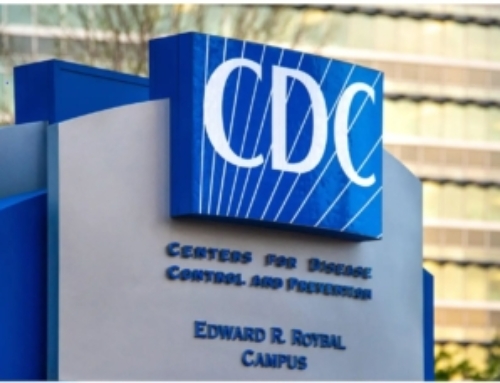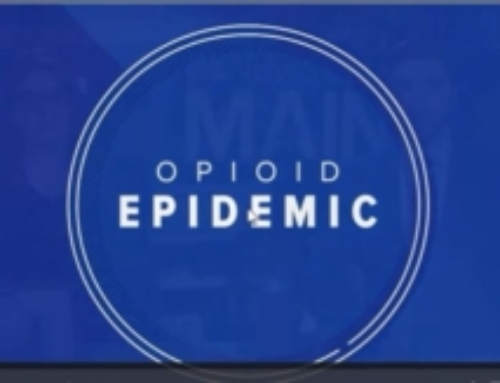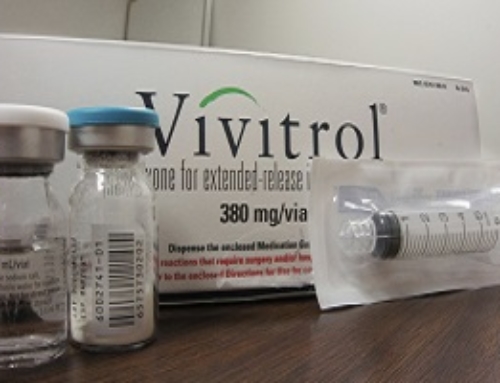Opioids continue to be drug most commonly involved in overdose-related deaths in the United States.1 Consequences of this epidemic have, appropriately, been extensively documented.1 Often overlooked, however, is the persistent scourge of methamphetamine use. The attention and funding dedicated to opioid abuse belies the gravity of methamphetamine use for our patients and health care systems. We call attention to this in hopes that we may avert a similarly lethal methamphetamine epidemic.
Methamphetamine Abuse in Clinical Settings
Working in an urban safety net hospital, our clinical practice is increasingly devoted to the care of patients with stimulant (methamphetamine) use disorder. In 2018, 28% of our hospital admissions involving substances were related to methamphetamines—more than twice the percentage related to opioids.
The behavioral pharmacology of methamphetamine lends itself to aggression, agitation, and violence. Hence, these patients are often brought to care by law enforcement for disturbances in the community. These patients then require intensive treatment given the risk of injury to themselves, other patients, and health care staff. Beyond the effects of acute intoxication, neurotoxic sequelae can result in disabling delusions and hallucinations that persist even after sustained sobriety and are often resistant to pharmacotherapy. This often leads to a misdiagnosis of schizophrenia or bipolar disorder.2,3 These problematic symptoms and the lack of FDA-approved treatments for methamphetamine use disorders can lead to feelings of helplessness and clinician burnout.
Case Vignette
“Michael Warner” is a 56-year-old male with an unknown past psychiatric history. He has been admitted for suicidal ideation and thoughts of hanging himself. He states he has been increasingly depressed and hopeless over the past 3 years because of ongoing harassment by a cartel. His problems started after he witnessed something he should not have at a highway rest stop while working as a truck driver. This caused him to lose his job leading to the dissolution of his marriage and divorce. Mr Warner states that he lives in constant fear for his life and is unable to work, because every several months he has to move to avoid being found by the cartel. He is unable to concretely describe what he witnessed. Mr Warner states he would rather end his life than continue in constant fear.
Collateral information is obtained from Mr Warner’s adult daughter, with whom he is still close. She stated he long-standing struggles with alcohol and began to use methamphetamines in his early 40s. About 4 to 5 years ago, she and her mother had begun to notice increasing paranoia about a drug cartel. Mr Warner insisted the family was being monitored and followed. He lost his job as a truck driver because of behavioral problems at work.
At the urging of his family, he entered treatment for methamphetamine use and has been sober for roughly 2 years. However, his paranoia continued despite several trials of antipsychotics, and his wife divorced him after he became convinced she was an informant for the cartel. Mr Warner minimizes his past drug use, and his mental status exam is normal, with the exception of paranoid delusions. Urine toxicology is negative.
Methamphetamine Abuse Is on the Rise
While methamphetamine-induced symptoms are certainly problematic, methamphetamine is also lethal in overdose. In order to lower the cost of production, methamphetamines are often built with other substances of varying toxicity, of which users are unaware. In 2018, 318 Coloradans died from methamphetamine overdoses—the second year that methamphetamine overdose deaths exceeded those from heroin (229 deaths in 2018).4 Up to 40% of patients entering medication-assisted therapy for opioid use at our institution are also using methamphetamine, portending poor opioid treatment retention.5
This concurrent epidemic has escaped widespread national attention in part because it has remained isolated to less densely populated regions of the country. Whereas fentanyl is most frequently involved in overdose related deaths east of the Mississippi River, methamphetamine is the most frequently involved drug in the Western United States.6 Yet, methamphetamine-related presentations are becoming more common nationally as well: between 2008 and 2015, amphetamine-related hospitalizations per 100,000 US adults (mainly comprised of methamphetamine) increased by 245%, increase compared to 46% for opioids and 12% for alcohol.7
Lessons From the Opioid Epidemic
We must apply the lessons learned from fighting the opioid epidemic to the treatment of methamphetamine-related disorders. Harm reduction measures, including providing clean needles for injection, expansion of contingency management, more aggressive use of pharmacotherapies with even modest evidence, and targeted therapeutic interventions for those in precontemplative stage of change should be extended to populations with high rates of methamphetamine use.8 Education should be provided to health providers on the identification and management of patients with stimulant use disorders. We advocate strong integration of therapeutic approaches with the criminal justice system, given how often we see this patient population come to clinical attention through law enforcement. Certainly, these initiatives will need to account for the impact of the COVID-19 pandemic and resultant interruptions in care accessibility.
The opioid epidemic has cost hundreds of thousands of lives, though arguably it has brought greater access to high-quality substance treatment. There is no reason that a similar number must die from methamphetamine for us to learn the same lessons.
Dr Wolf is a psychiatrist at Denver Health Medical Center, Department of Behavioral Health, Denver, Colorado. She is also an assistant professor in the Department of Psychiatry in the University of Colorado, School of Medicine. Dr Simpson is medical director of Psychiatric Emergency Services at Denver Health Medical Center, Denver, Colorado. He is also an associate professor of psychiatry in the University of Colorado, School of Medicine. Dr Al-Tayyib is associate research scientist at Denver Public Health and associate professor in the Colorado School of Public Health. Dr Rylander is an associate professor of psychiatry at the University of Colorado, School of Medicine and behavioral health medical director for Colorado Community Health Alliance.
References
1. Hedegaard H, Bastian B, Trinidad J, et al. Drugs most frequently involved in drug overdose deaths: United States, 2011-2016. Centers for Disease Control. National Vital Statistics Reports. 67;(9). December 12, 2018. Accessed December 9, 2020. https://www.cdc.gov/nchs/data/nvsr/nvsr67/nvsr67_09-508.pdf
2. Akiyama K, Saito A, Shimoda K. Chronic methamphetamine psychosis after long-term abstinence in Japanese incarcerated patients. Am J Addict. 2011;20(3):240-9.
3. Grant KM, LeVan TD, Wells SM, et al. Methamphetamine-associated psychosis. J Neuroimmune Pharmacol. 2012;7(1):113-39.
4. More Coloradans died from meth overdoses in 2018 than ever before. Colorado Health Institute. Published Oct 19, 2019. Updated November 1, 2019. Accessed December 9, 2020. https://www.coloradohealthinstitute.org/research/more-coloradans-died-meth-overdoses-2018-ever#:~:text=New%20data%20from%20the%20Colorado,1%2C012%20deaths%20recorded%20in%202017.
5. Tsui JI, Mayfield J, Speaker EC, et al. Association between methamphetamine use and retention among patients with opioid use disorders treated with buprenorphine. J Subst Abuse Treat. 2020;109:80-85.
6. Hedegaard H, Bastian B, Trinidad J, et al. Regional differences in drugs most frequently involved in drug overdose deaths: United States, 2017. Centers for Disease Control. National Vial Statistics Reports. 68;(12). October 25, 2019. Accessed December 9, 2020. https://www.cdc.gov/nchs/data/nvsr/nvsr68/nvsr68_12-508.pdf
7. Winkelman TNA, Admon LK, Jennings L, et al. Evaluation of Amphetamine-Related Hospitalizations and Associated Clinical Outcomes and Costs in the United States. JAMA Netw Open. 2018;1(6):e183758.
8. Simpatico TA. Vermont responds to its opioid crisis. Prev Med. 2015;80:10-11.








Leave A Comment